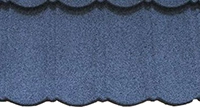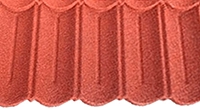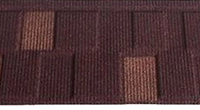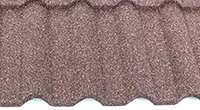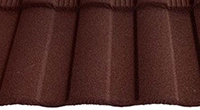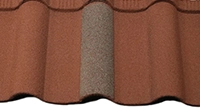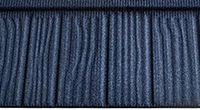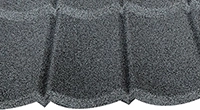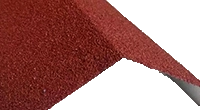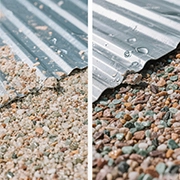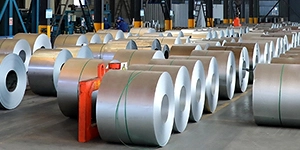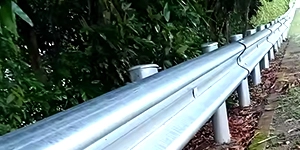Can Stone-Coated Metal Tiles Withstand Extreme Cold Climates?
Homeowners and builders in cold regions face unique roofing challenges, leading to an important question: can stone-coated metal tiles truly withstand extreme cold climates? The comprehensive answer reveals why these roofing systems aren't just adequate for harsh winter conditions, but often represent the optimal solution.
Confronting the Weight of Snow Accumulation
In severe winter conditions, snow accumulation presents a substantial structural challenge. Traditional clay or concrete tiles can be dangerously heavy themselves—when combined with dense, wet snow, they may push roof structures beyond their designed capacity. Stone-coated metal tiles address this critical issue through their remarkably lightweight nature, weighing only 5-6 kg per square meter—less than one-sixth the weight of conventional clay tiles .
This dramatic weight reduction means the roof structure itself often requires less extensive (and expensive) reinforcement, while simultaneously providing enhanced safety margins under heavy snow loads. The inherent strength of the steel substrate further enables these tiles to support significant static loads without deformation or failure, making them ideal for regions where heavy snowfall is a seasonal certainty.
Preventing Destructive Ice Dam Formation
Ice dams represent one of the most destructive winter roofing challenges. They form when heat loss from interior spaces melts snow on upper roof areas, with meltwater refreezing at colder eave overhangs. This ice accumulation blocks proper drainage, creating pools of standing water that can back up under traditional roofing materials.
Stone-coated metal tiles combat this phenomenon through multiple mechanisms. Their interlocking side joints and raised edges create effective channels that encourage water to drain properly rather than penetrating beneath the roof surface . Additionally, the non-absorbent metal substrate prevents water infiltration even if minor ice formation occurs at edges.
The installation system further enhances ice dam resistance. The continuous underlayment membrane installed beneath the battens provides secondary protection against any potential water penetration . For enhanced performance in severe ice dam scenarios, adding self-regulating heating cables within eaves and valleys provides positive freeze protection without compromising the tile system.
Resisting Freeze-Thaw Cycle Degradation
Perhaps the most technically impressive feature of stone-coated metal tiles in cold climates is their immunity to freeze-thaw deterioration. Porous traditional materials like concrete and clay absorb moisture during warmer periods, which then freezes and expands during cold spells. This repeated expansion and contraction causes microcracks that grow over time, leading to spalling, surface deterioration, and eventual structural failure.
Stone-coated metal tiles eliminate this failure mode entirely because their steel substrate is completely non-absorbent . Water cannot penetrate the material to create destructive internal pressure when freezing occurs. Laboratory testing confirms they maintain integrity through temperature cycling from -40°C to high summer temperatures without cracking, delamination, or performance degradation .
Material Performance at Extreme Low Temperatures
All roofing components must remain flexible and functional even in deepest winter. The acrylic resins binding stone granules to the metal substrate maintain excellent adhesion and flexibility at temperatures as low as -40°C , ensuring the protective surface remains intact through brutal cold spells. Meanwhile, the galvanized aluminum-zinc steel substrate (55% aluminum, 43.4% zinc, 1.6% silicon) offers exceptional corrosion resistance, preventing rust formation that plagues inferior metals when protective snow cover melts and exposes surfaces to moisture and oxygen .
Enhanced Thermal Performance Options
While the tiles themselves don't provide primary insulation, their installation system accommodates exceptional thermal resistance. The batten framework creates a ventilation air gap between the tiles and underlying insulation, while the design readily accommodates thick insulation boards (commonly extruded polystyrene) within the assembly . This ventilation channel helps maintain a cold roof surface—crucial for preventing snow melt and ice dam formation—while the insulation layer maintains interior comfort and energy efficiency.
Installation Advantages in Cold Conditions
Unlike many roofing materials that become brittle or unworkable in cold weather, stone-coated metal tiles can be safely installed even in low temperatures . This characteristic provides valuable scheduling flexibility for projects in regions with short construction seasons. However, installers should take additional precautions during winter installation, including storing tiles at recommended temperatures before installation and ensuring safety protocols address potential slippery surface conditions.
Long-Term Performance Evidence
Real-world performance evidence from cold climate installations confirms laboratory testing. Buildings in severe winter regions across Northern Europe, Canada, and mountainous Asia have demonstrated decades of reliable performance without the degradation typical of traditional materials. The complete resistance to water absorption, combined with robust structural characteristics and intelligent detailing, enables these roofing systems to reliably withstand what winter delivers—year after year, decade after decade.
For property owners, builders, and architects operating in cold climates, stone-coated metal tiles offer not just adequate cold weather performance, but truly exceptional durability that frequently surpasses traditional local roofing alternatives. Their combination of lightweight strength, ice dam resistance, freeze-thaw immunity, and long-term reliability makes them an increasingly preferred solution wherever winter brings its worst.
